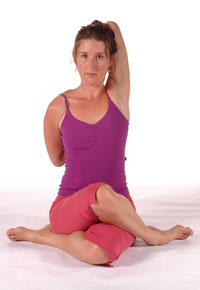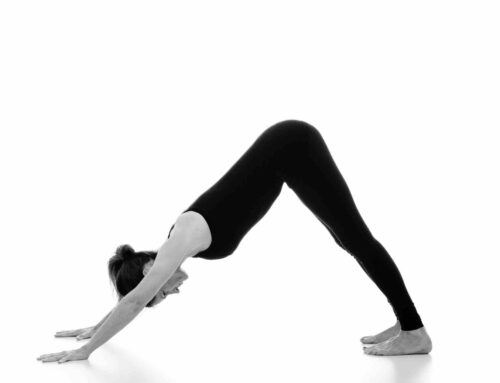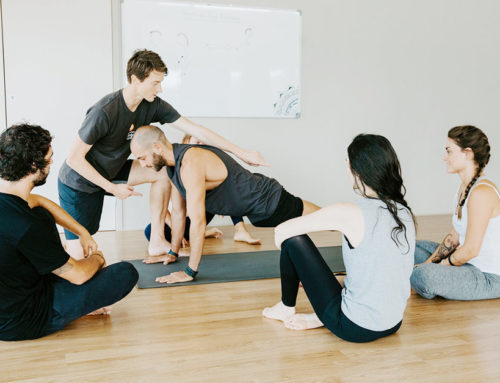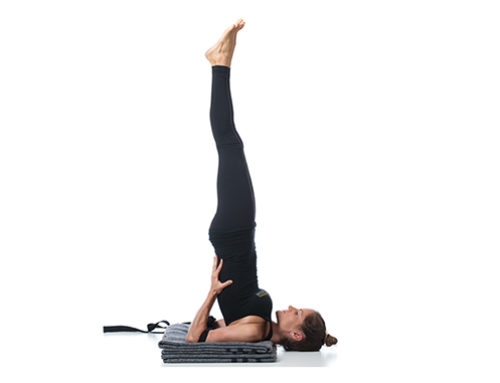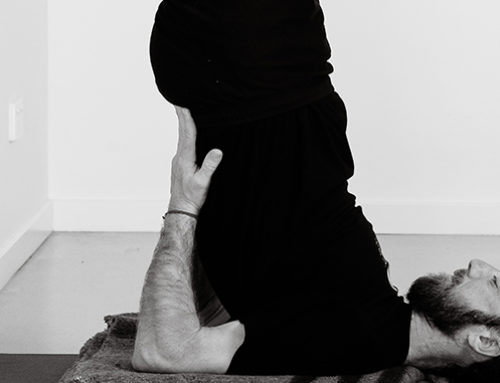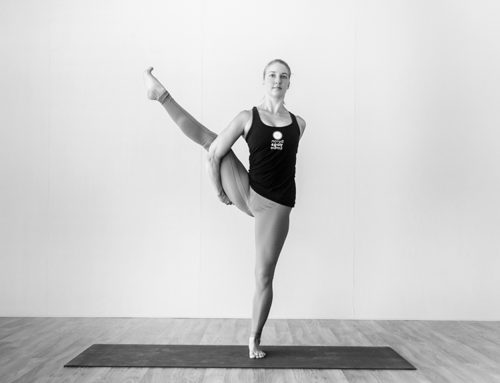Written by Brook McCarthy
Gomukhasana is an often-underestimated pose which works two of the most important parts of the body – the shoulders and hips. It is particularly appreciated in sequence before or after down-face dog poses to help relieve any tension that has crept into the shoulders and help open the shoulders further for down-face dog.
Sanskrit
Go – of cows
Mukha – face
Asana – physical posture
Benefits
Gomukhasana is a great hip and shoulder opener and can be a boon for those suffering sciatica by stretching the piriformis.
Contraindications and cautions
Knee, shoulder or neck injuries.
Opening the shoulders
It’s important to rotate the scapula, or shoulder blades, upwards or downwards before you adduct the arms. In layman’s terms, this means that if your right arm is on top, raise the right arm above the head and internally your arm in your shoulder socket so that the right palm faces behind you before you bend your right elbow. Your left arm needs to internally rotate in your shoulder socket until your palm faces left, then your left shoulder blade needs to move back slightly before you bend your left elbow and you begin to move the hands towards each other.
If you don’t involve your scapulae in the rotation of your arms before you bring your lower arms and hands towards each other, then you risk introducing too much movement to the glenohumeral joint (shoulder joint) which can overstretch the joint or impinge the tendons of the biceps and supraspinatus, the deep muscle running across the tops of the shoulders.
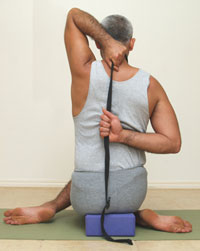
Keeping your lower abdominal muscles contracted during inhalations helps direct your breath into the thoracic (mid-back) region, which intensifies stretching of the shoulder structures. Be sure not to let the thoracic spine move into a backbend – pull your lower ribs in so that you are holding your spine in neutral position.
Helping the hips
Getting the legs into Gomukhasana can be a trial for those suffering excessively tight hips or thighs. A modification to help open the hips one at a time is to extend one leg out straight and bring the other leg over the top towards the ultimate position of Gomukhasana. The bent knee can be vulnerable in this position so flex the foot of that leg.
Some people find that sitting on end of a bolster helps relieve pressure on their hips; others find that the height increases pressure to the knees, caused by the pelvis going into an anterior tilt. If you find that elevating your hips intensifies pressure in your knees, then focus on dropping your inner groin toward the floor and tilt your pelvis forward. Relax your belly and direct your breath into your lower abdomen to help drop the inner groin and release the hips.
The menisci, two parts of the knee cartilage which help give the necessary structural integrity for when the knee undergoes tension or torsion, are most vulnerable when the knee joints are semi-flexed as in Gomukhasana. There should be no sustained pain in the knees during Gomukhasana and those with knee injuries or vulnerabilities should go slow and modify the pose if pain presents. An alternative leg variation is to have simply cross the legs or even straighten both legs in front of you, elevating your hips on a bolster or cushion, until the injury heals.
Whether sitting on the mat or elevated on a bolster, make sure your weight is distributed as evenly as possible between your two sit bones. In the most advanced expression of the pose, your feet will be beside your buttocks, with your feet inverted and your big toe nails touching the floor.
Therapeutic uses
For those suffering sciatica, where pain is due to muscular tension in the back of the pelvis or by compression of the sacroiliac joints, Gomukhasana can be a fantastic salve. The piriformis muscle, a deep muscle which runs diagonally across the buttocks and acts to rotate the leg outwards, is often the culprit of sciatic pain.
According to Mary Pullig Schatz in Back Care Basics, “When a short or tight priformis is stretched, it can compress and irritate the sciatic nerve … people who habitually stand with their toes turned out often develop piriformis syndrome, as do runners and cyclists, who overuse and under-stretch the piriformis muscle.”
Gomukhasana can be combined with Raja Kapotasana (King Pigeon pose) forward bend modification and Ardha Matsyendrasana (Half Lord of the Fishes pose) into a graceful ‘flow’ sequence. All three poses help stretch the muscles and nerves at back of the pelvis.
It is common in sciatica that one sacroiliac joint is stiff and the other is hyper-mobile, necessitating that one side be strengthened and the other stretched. Experiment at home, take your time and listen to your body. Don’t worry if your practice feels imbalanced, this is part of the healing process as you do what your body needs to strengthen, stretch, realign and rebalance.
References
Yoga Anatomy, Leslie Kaminoff
Out of Joint, Judith Lasater
Back Care Basics: A Doctor's Gentle Yoga Program for Back and Neck Pain Relief, Mary Pullig Schatz
Front view image of Gomukhasana courtesy of Australian Yoga Life magazine.
Related articles
